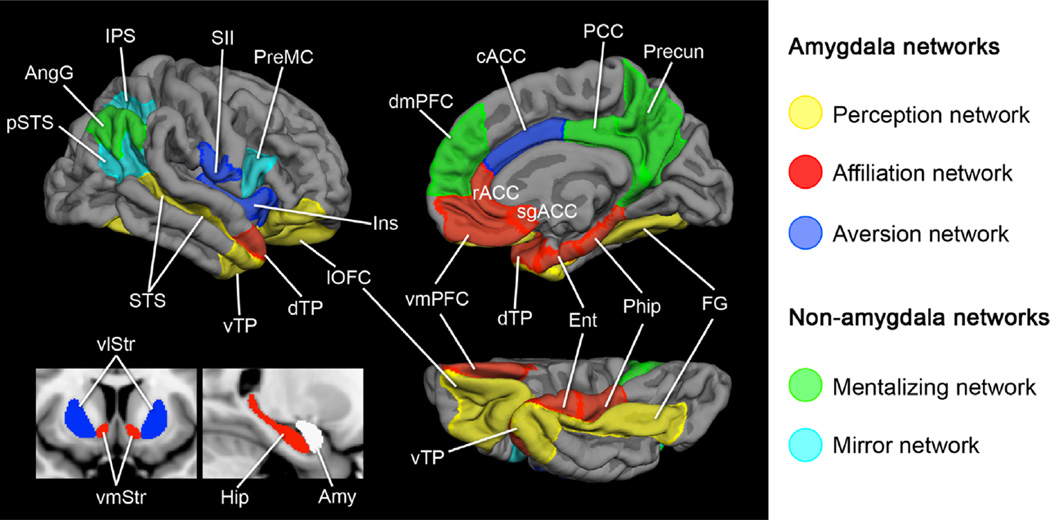Fig. 4.
A schematic of five large-scale brain networks subserving processes important for social behavior. Here, we show three networks that are anchored in the amygdala (amygdala-based networks) and two that are not (control networks). The amygdala is displayed in white indicating that it is the hub of the three amygdala-based networks. List of ROIs with abbreviations–Perception network: lOFC, lateral orbitofrontal cortex; vTP, ventrolateral temporal pole; FG, fusiform gyrus; STS, superior temporal sulcus. Affiliation network: dTP, dorsomedial temporal pole; rACC, rostral anterior cingulate cortex; sgACC, subgenual anterior cingulate cortex; vmPFC, ventromedial prefrontal cortex; Ent, entorhinal cortex; PHip, parahippocampal cortex; vmSt, ventromedial striatum. Aversion network: cACC, caudal anterior cingulate cortex; Ins, insula; SII, somatosensory operculum; vlSt, ventrolateral striatum. Mentalizing network: dmPFC, dorsomedial prefrontal cortex; PCC, posterior cingulate cortex; Precun, precuneus; AngG, angular gyrus (temporoparietal junction). Mirror network: pSTS, posterior superior temporal sulcus; IPS, intraparietal sulcus; PreMC, premotor cortex.

